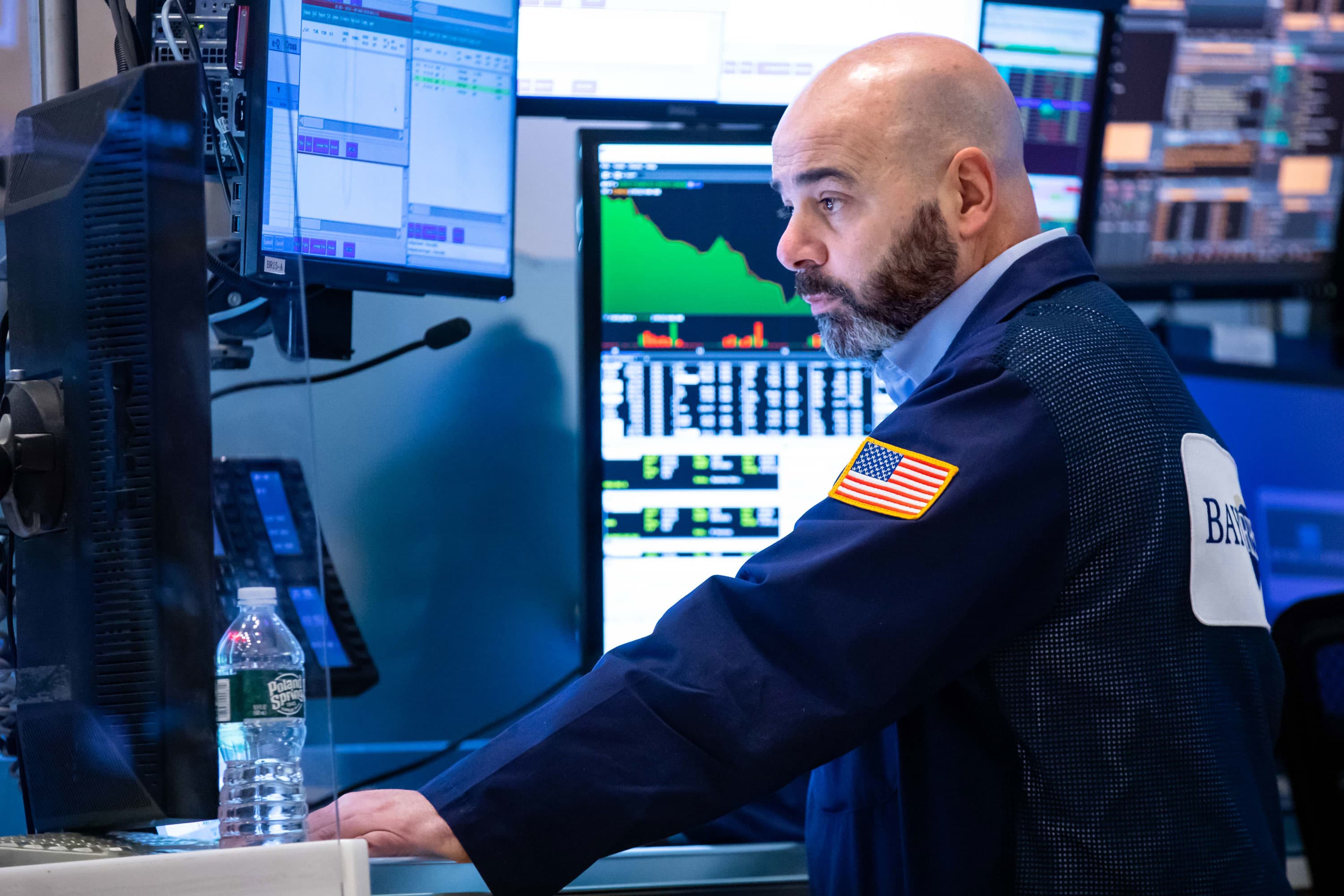Dow futures drop more than 800 points after Russia attacks Ukraine, S&P 500 futures lose 2.5%

U.S. stock futures fell sharply Thursday as Russia attacked Ukraine, causing global energy prices to jump and sending investors fleeing for the safety of fixed income assets.
The invasion comes as global equity markets were already reeling because of decades-high inflation stemming from the pandemic.
S&P 500 futures were down 2.5%, set to plunge the benchmark further into correction territory. The index closed Wednesday 12% off its record high. Dow Jones Industrial average futures fell 810 points, or 2.4%. The blue-chip measure closed Wednesday more than 10% off its record. Nasdaq 100 futures declined 3%. The Nasdaq Composite is teetering on bear market territory, down just less than 20% from its high through Wednesday’s close.
Loading chart…
Moscow launched the military action in Ukraine overnight Thursday. There were reports of explosions and missile strikes on several key Ukrainian cities including its capital, Kyiv. Russian President Vladimir Putin called the invasion “the demilitarization” of Ukraine and said Russia’s plans do not include the occupation of Ukrainian territories.
NATO, the most powerful military alliance in the world, is set to reinforce its presence on its eastern front following Russia’s invasion of Ukraine. President Joe Biden condemned the attack, saying in a statement that “the world hold Russia accountable.”
“Russia alone is responsible for the death and destruction this attack will bring, and the United States and its Allies and partners will respond in a united and decisive way,” Biden said.
The Russia invasion “is really worse than a baseline expectation that we had or the markets had. I would argue we are talking basically another 5% to 6% down which would put us close to 20% or bear market territory,” said Binky Chadha, chief U.S. equity and global strategist at Deutsche Bank,” on CNBC’s “Squawk Box” Thursday.
Global oil benchmark Brent jumped 7.7% to $104.56 per barrel, passing the $100 level for the first time since 2014. The U.S. oil benchmark, WTI, traded 7.2% higher at just shy of $100 per barrel. Natural gas prices surged 5%.
Loading chart…
Treasury prices increased and yields tumbled, with the benchmark 10-year note rate declining to 1.86% as investors sought safe-haven bonds. The move reversed a ramp in yields that took the 10-year well above 2% earlier in the session. Gold futures increased 3.2% to $1,970 an ounce as investors sought other safe havens. The Cboe Volatility index, a gauge of Wall Street fear, spiked to above the 37 level on Thursday, near hits highest levels of the year.
European stocks sold off sharply on Thursday after Russia began an attack on Ukraine, tipping a longstanding diplomatic crisis into a military conflict. The pan-European Stoxx 600 dropped 3.6% to its lowest point of the year.
The VanEck Russia ETF, a U.S.-traded security which invests in top Russian companies, dropped nearly 25% in premarket trading on Thursday.
“The worst-case scenario of Russia invading Ukraine beyond the separatist regions is a shock to the equity and oil markets. The fallout could have sizeable negative impact on the European economy which would then dampen US activity modestly,” said Kathy Bostjancic, chief U.S. economist at Oxford Economics. “In the face of such uncertainty and negative economic fallout, the Fed is likely to raise the policy rate just 25bps in March, but it will still move forward.”
It was a broad sell-off with investors selling shares en masse. Apple was down 4% in premarket trading. Bank of America and JPMorgan Chase lost more than 3% each. Tesla was 7% lower in early trading.
Among the few stocks in the green were energy and defense stocks. Devon Energy was up 5% and Chevron rose 4.2% in premarket trading. Lockheed Martin and Raytheon Technologies gained 2% apiece.
Bitcoin was getting hammered, most recently down 6.5% to $35,207.50 as investors shed risk.
“Investors should expect strong sanctions imposed on Russia, which will slow growth and leave upward pressure on commodity prices,” wrote Dennis DeBusschere of 22V Research. “How long this crisis takes to unfold will determine how much inflation, financial conditions, and growth will be impacted. Short-term, a flight to safety means Treasury yields, rate hike expectations and risk assets are sharply lower.”
The Ukraine situation has added to tensions for the market, which had been worried about tighter Federal Reserve policy amid escalating inflation. Traders have adjusted their views on the Fed in recent days, with the likelihood of a 0.5 percentage point interest rate hike in March down to 17%, according to CME Group data.
Wednesday marked another downbeat market session on Wall Street, as traders grappled with the ongoing Russia-Ukraine conflict.
In the Wednesday session, the Dow dropped about 464 points, or 1.3%, and closed at its lowest level of 2022 so far. The S&P 500 fell 1.8%, moving deeper into correction and ending the day about 12% from its Jan. 3 record close. The tech-heavy Nasdaq Composite lost 2.6% and now sits close to bear market territory.
— CNBC’s Christine Wang contributed to this report.




